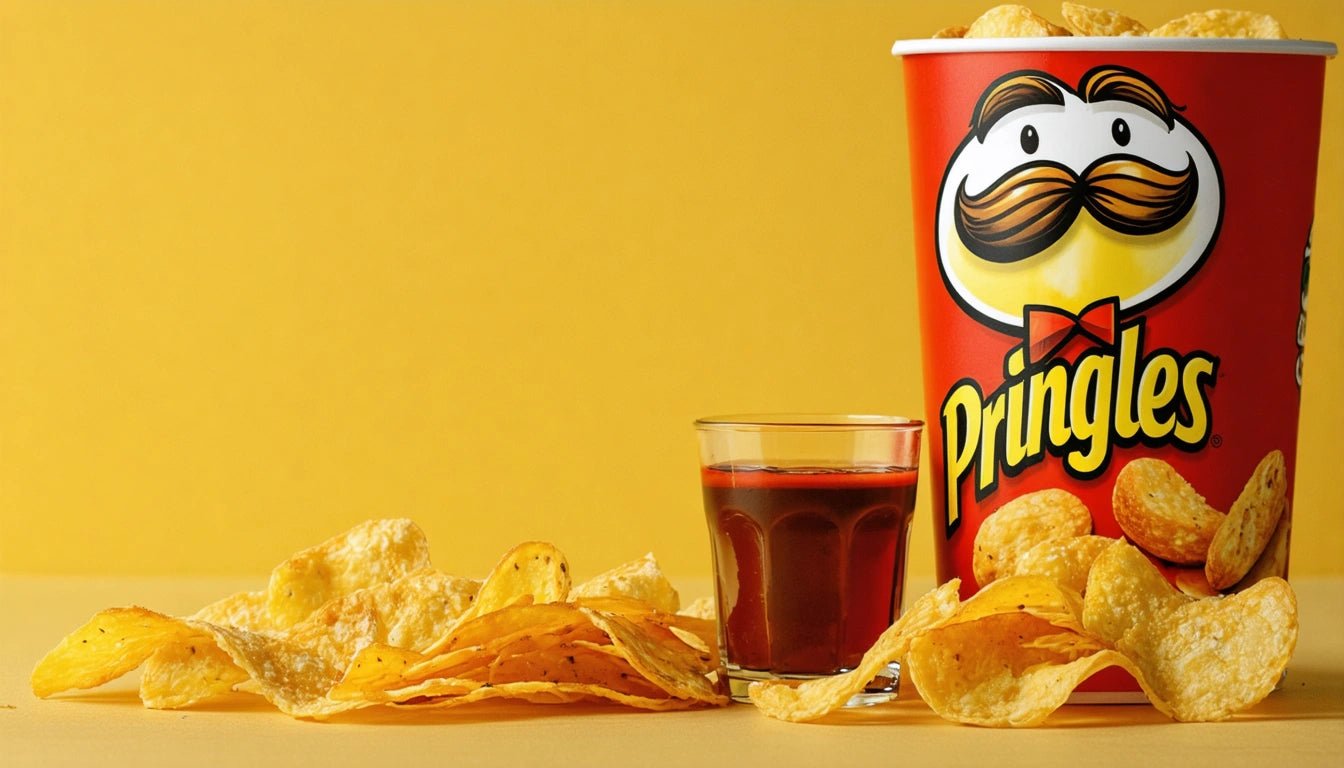Table of Contents
Exploring Pringles: History, Ownership, and Gluten-Free Status
Pringles stands as one of the world's most recognizable snack brands, with its distinctive saddle-shaped chips stacked neatly in cylindrical containers. For consumers with dietary restrictions, understanding product ingredients becomes crucial. This comprehensive guide explores when Pringles were invented, who currently owns the brand, and answers the important question: are Pringles gluten free?
The History of Pringles: When Were Pringles Invented?
Pringles were invented in the late 1960s, with the product first hitting store shelves in 1968. The creation came from Procter & Gamble's ambitious effort to develop a perfect potato chip that would address common consumer complaints about traditional chips, including breakage, greasiness, and limited shelf life.
The innovative snack was the result of research led by chemist Fredric Baur, who spent years perfecting both the saddle-shaped chip and its iconic cylindrical packaging. Interestingly, Baur was so proud of his packaging design that upon his death in 2008, a portion of his ashes was buried in a Pringles can at his request.
The name "Pringles" reportedly came from a street name in Cincinnati (Pringle Drive), though other accounts suggest it was randomly chosen from a phone book because it sounded appealing. Initially marketed as "Pringles Newfangled Potato Chips," the product faced legal challenges over whether it could be called a potato chip, given its manufacturing process and ingredients.
Who Owns Pringles? Brand Ownership Evolution
The ownership history of Pringles has seen significant changes over the decades:
- 1968-2012: Procter & Gamble (P&G) created, developed, and owned Pringles for most of the brand's history.
- 2012: Kellogg Company acquired the Pringles brand from P&G for approximately $2.7 billion, significantly expanding Kellogg's snack food portfolio.
- Present: Kellogg Company continues to own and manufacture Pringles globally as part of its extensive snack division.
This acquisition was strategic for Kellogg, similar to how major beverage companies acquire complementary brands to strengthen their market position. The Pringles purchase instantly tripled Kellogg's snack business and provided the company with a truly global snack platform.
Highlight: Pringles generates over $1 billion in annual sales across more than 140 countries, making it one of Kellogg's most valuable brand acquisitions.
Are Pringles Gluten Free? Ingredient Analysis
For those with celiac disease or gluten sensitivity, the question "are Pringles gluten free?" is particularly important. The answer requires examining the ingredients and manufacturing processes.
Standard Pringles are not considered gluten free. The primary reasons include:
- Original Pringles contain wheat starch as an ingredient
- Many flavored varieties contain wheat derivatives or barley malt
- Manufacturing occurs on shared equipment that processes wheat products
- Pringles are not certified or labeled as gluten free
Unlike some other chip brands that offer gluten-free options, Pringles has not developed a dedicated gluten-free product line. This makes them unsuitable for consumers requiring strict gluten avoidance.
The main ingredients in Original Pringles include dried potatoes, vegetable oils, cornstarch, rice flour, maltodextrin, salt, and wheat starch. While the wheat starch contains relatively small amounts of gluten, it's enough to make the product unsafe for those with celiac disease.
The Unique Manufacturing Process Behind Pringles
What makes Pringles distinct from traditional potato chips is their manufacturing process. Rather than being sliced from whole potatoes, Pringles are made from a dough of dried potato flakes mixed with other ingredients.
The process involves:
- Creating a dough from dried potato flakes and other ingredients
- Rolling the dough into thin sheets
- Cutting the sheets into chip-sized pieces
- Pressing these pieces onto molds that give Pringles their distinctive saddle shape
- Cooking the formed chips in vegetable oil
- Applying seasonings
- Packaging in the iconic cylindrical containers
This unique process creates a uniform product with consistent texture and flavor, but it also introduces ingredients not found in traditional potato chips. The manufacturing process bears some similarities to how specialized paper products are formed into specific shapes for consistent performance, though for entirely different purposes.
The packaging innovation is equally important to the Pringles brand identity. The cylindrical container, designed by Fredric Baur, protects the fragile chips while creating a distinctive shelf presence. The container uses materials similar to polypropylene that's commonly used in food packaging for its durability and protective qualities.
Gluten-Free Alternatives and Future Product Innovations
For consumers seeking gluten-free alternatives to Pringles, several options exist in the market:
- Lay's Stax: A similar stacked potato crisp in a cylindrical container
- Kettle Brand potato chips: Many varieties are certified gluten free
- Utz potato chips: Most varieties are gluten free
- Good Crisp Company: Makes stacked potato crisps that are certified gluten free
Many snack manufacturers now recognize the growing demand for gluten-free products. Some companies have dedicated facilities or production lines to prevent cross-contamination, similar to how specialized packaging ensures product integrity in other industries.
While Kellogg's has not announced plans for a gluten-free Pringles line, the company continues to innovate with new flavors and limited editions. As consumer demand for allergen-friendly products grows, we may eventually see adaptations to this iconic brand's formulation.
For those monitoring their gluten intake, always check current product labels, as formulations can change. Manufacturers like Kellogg's regularly update their products, and ingredients may vary by country or production facility.



















